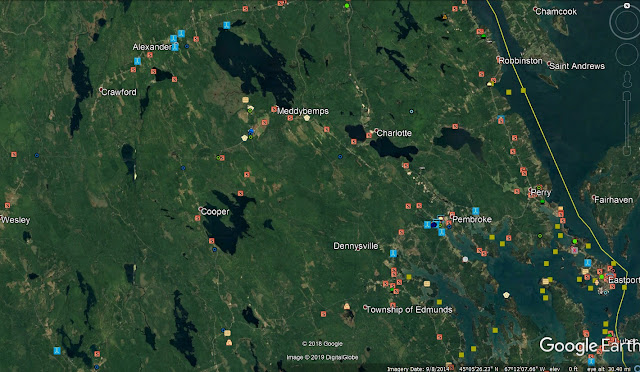EAST PENOBSCOT BAY FISHPEN APPLICATIONS WITHDRAWN!
Statement from the East Penobscot Bay Environmental Alliance\
The
East Penobscot Bay Environmental Alliance (EPBEA), part of the
Friends of Blue Hill Bay, is pleased to announce that Jorn Vad has withdrawn his applications to lease 30 acres of water for finfish aquaculture off Scott and Pickering Islands near Little Deer Isle.
The Aquaculture Hearing Examiner for the Department of Marine Resources (DMR) confirmed in a letter signed March 28, 2003, that the applications have been withdrawn, and that the pre-hearing conference and hearings scheduled for April in Brooksville and Deer Isle have been cancelled.
Not stated in the DMR letter, but implied by the communication from Mr. Vad to DMR, was that Mr. Vad would collect more information on the sites this summer and then may decide to re-apply for the leases next fall.
Although this may be a temporary victory for those opposed to the pen sites, we must continue to be vigilant and strengthen our own case against what we consider to be an inappropriate use of this area of East Penobscot Bay.
EPBEA was prepared to provide a wide array of fact and expert witnesses to expose the weaknesses of the Vad applications and show why these sites were not appropriate for large-scale finfish aquaculture. EPBEA has been collecting its own data and doing its own analysis for the last 18 months and would have provided a much more comprehensive analysis of the sites than either Mr. Vad or DMR has provided to date.
EPBEA was being aided in its fight against the Vad applications by the United Fishermen of Penobscot Bay, which was being represented by attorney John Foster of Eastport.
In the last two weeks of March, first EPBEA, and then the Fishermen's Group, filed petitions with DMR asking for a delay in the hearings because Mr. Vad had failed to mark the corners of the site at least 60 days before the hearing as required by the leasing regulations.
The entrance into the fray of a large group of local fishermen was a significant addition of strength to the intervenor effort and may have been responsible for the eleventh hour capitulation by Mr. Vad on the current application.
EPBEA has also had the excellent support and advice of Roger Fleming and the Conservation Law Foundation (CLF).
Since Sally McCloskey formed EPBEA almost two years ago and led the group for its first 18 months, CLF has been a staunch ally and helped EPBEA in its successful petition drive to bring needed changes in aquaculture regulations before the DMR.
CLF and EPBEA also intervened in Jorn Vad's Perry finfish lease applications, which were turned down by DMR, developed joint legislative initiatives, and actively intervened in the Board of Environmental Protection's proceedings to develop a general wastewater discharge permit to control the effects of finfish aquaculture on marine water quality and ecology.
Marsden Brewer, Vice President of EPBEA, has been very helpful in marshalling support within the local fishing community. Robert Gerber, President of EPBEA and a local island owner, focused on developing the technical case to demonstrate the unacceptable environmental impact that the pens would have on East Penobscot Bay.
The Board of EPBEA will meet in April to plan further actions to strengthen its demonstration that the proposed lease areas are inappropriate for finfish aquaculture.
EPBEA will also continue to work in the legislative, regulatory, and public information arenas to promote bay-wide management planning, appropriate regulation, and enhanced provision for public input into aquaculture applications.
EPBEA would like to thank all who have helped to fight these leases, attend hearings, write letters, sign petitions, give money, and donate time and energy to the cause of sound bay-wide management planning. We are deeply grateful for the community support that has emerged in this fight. We thank everyone who has taken part.
END












